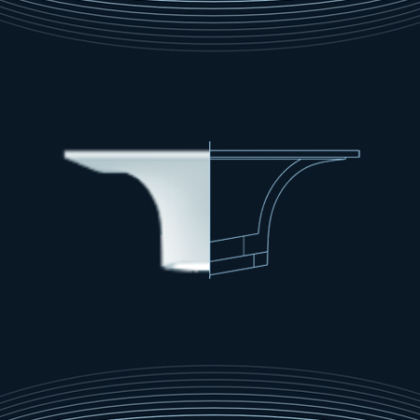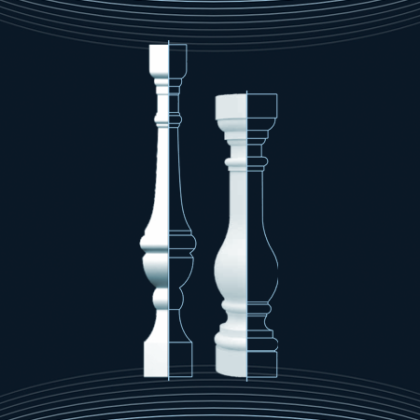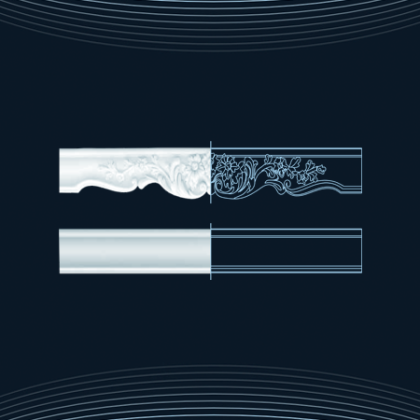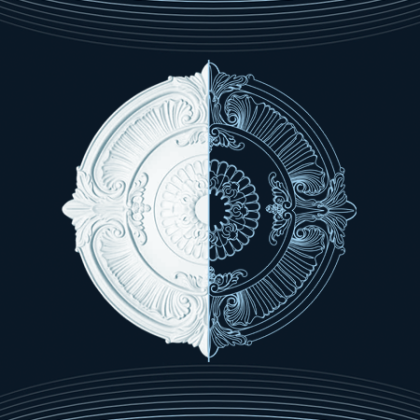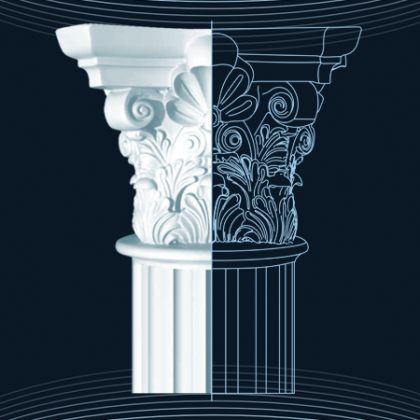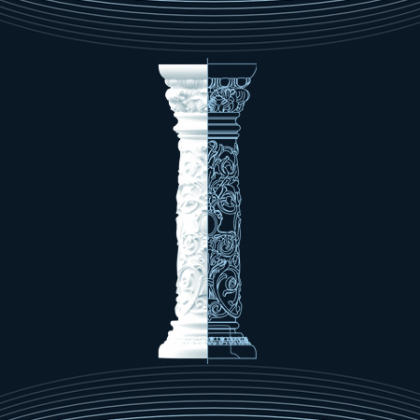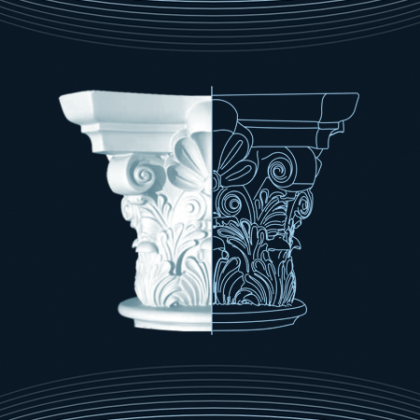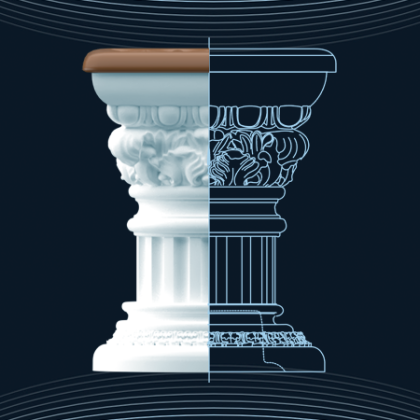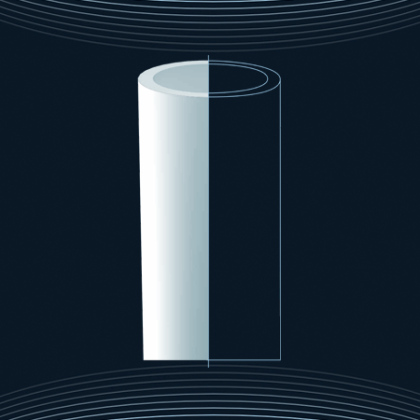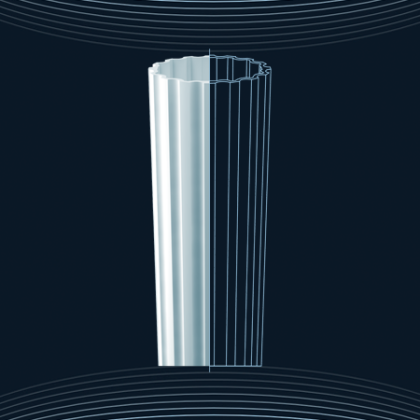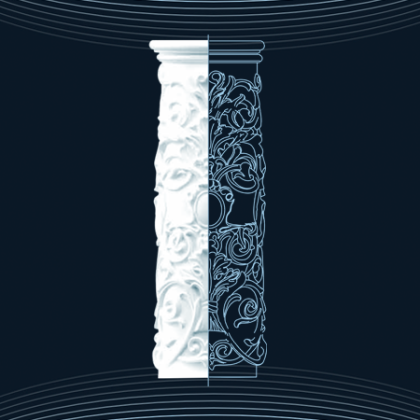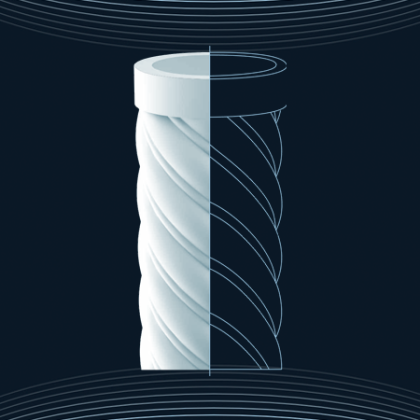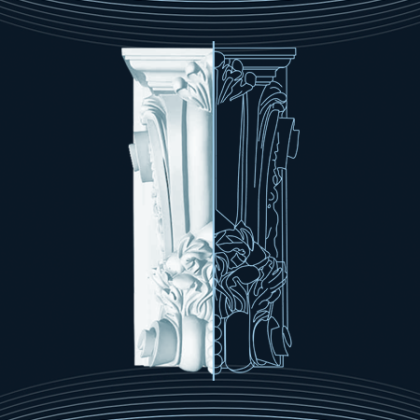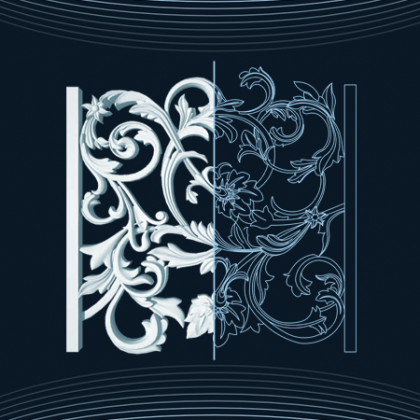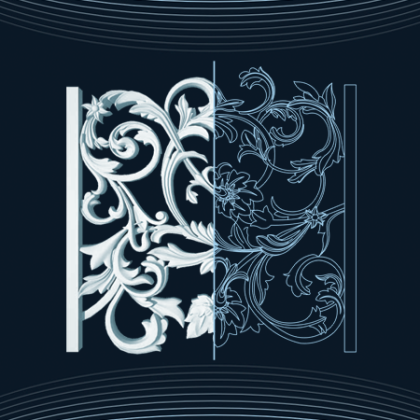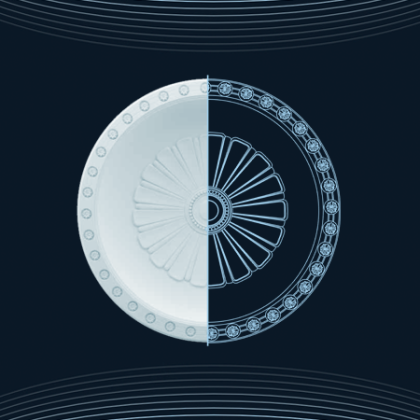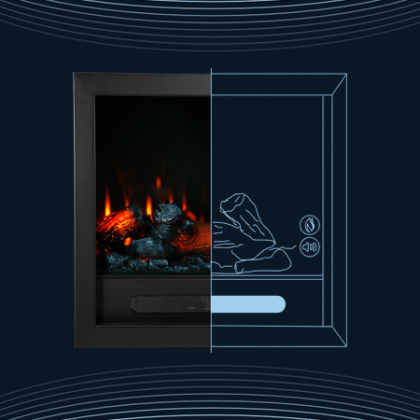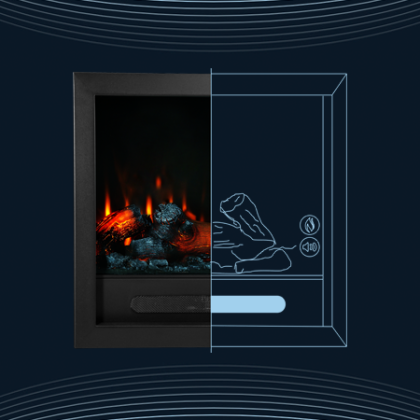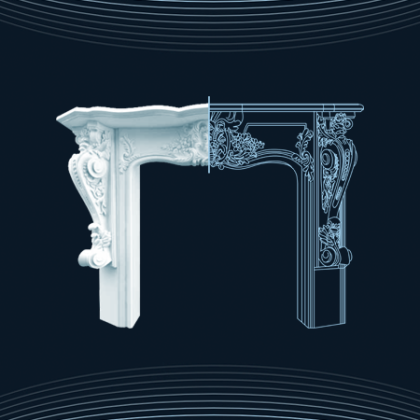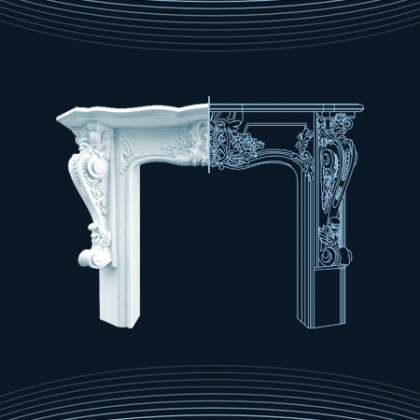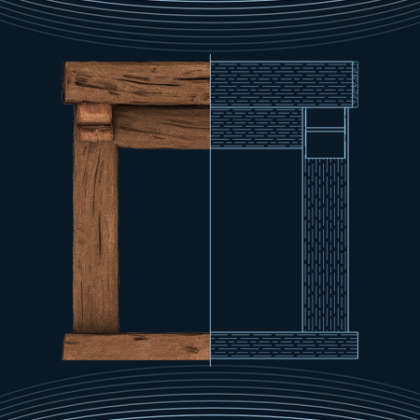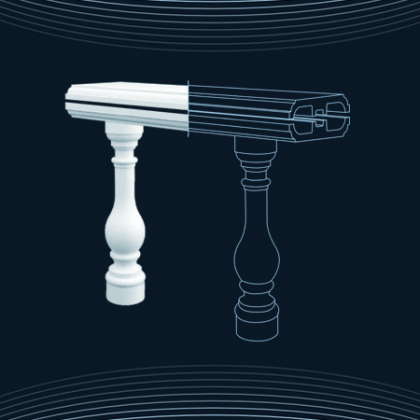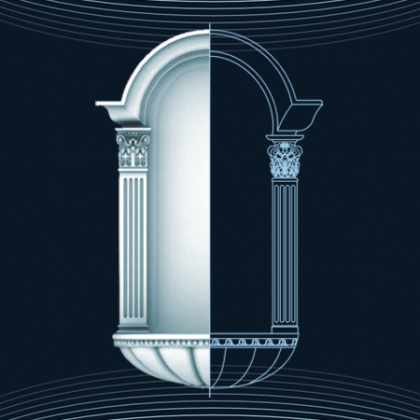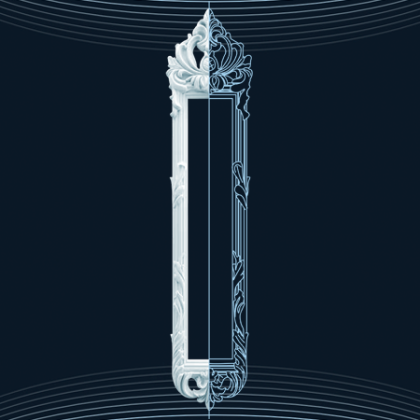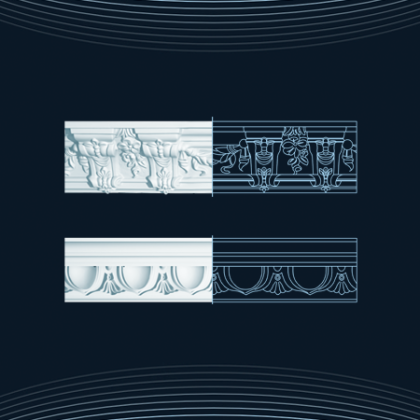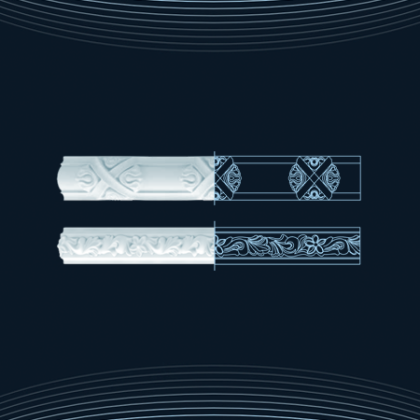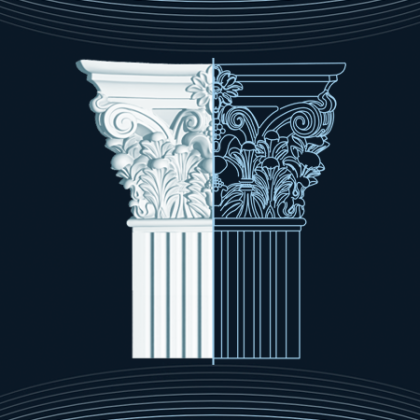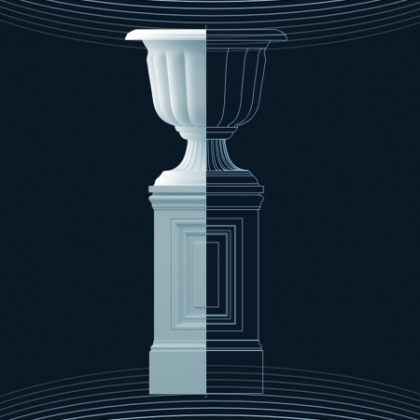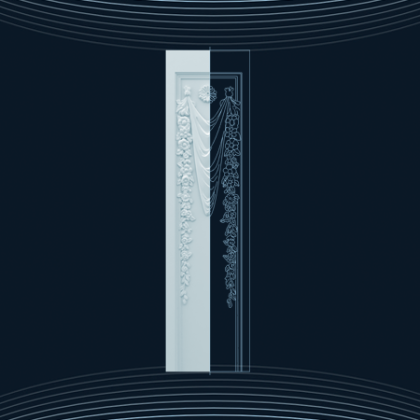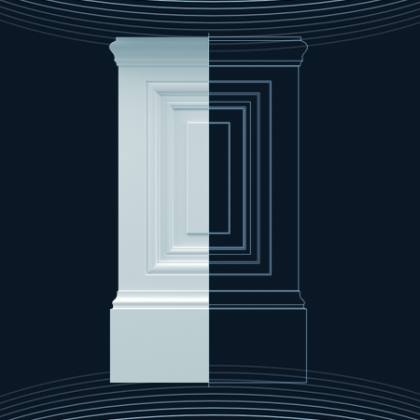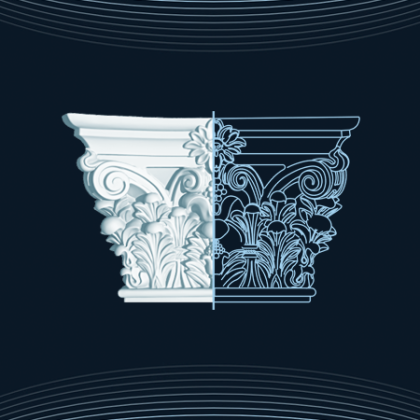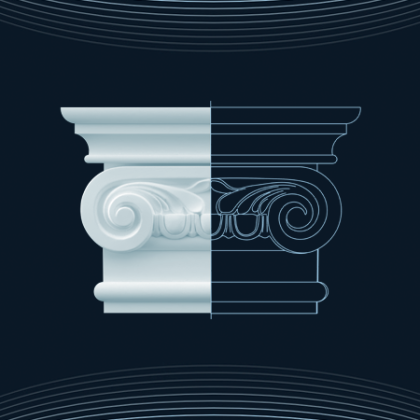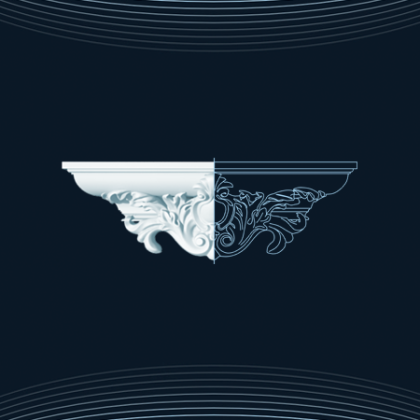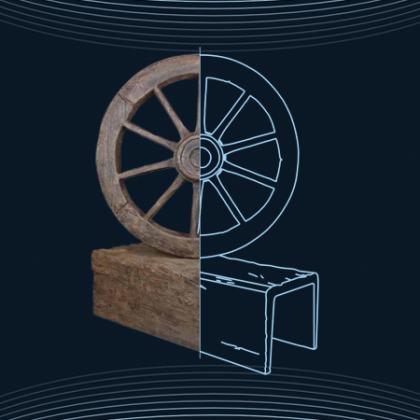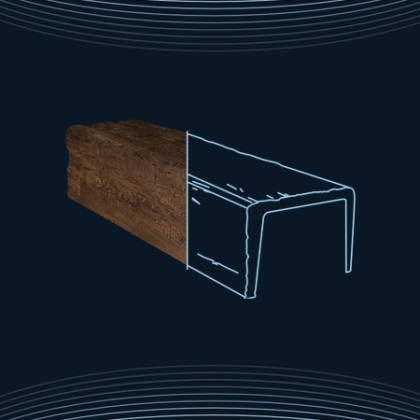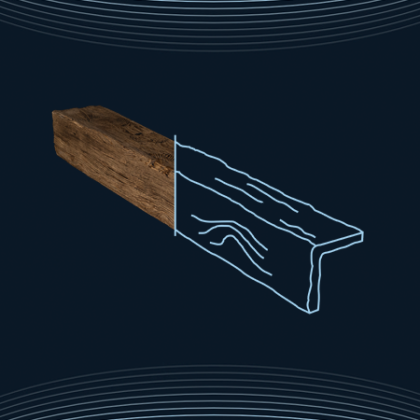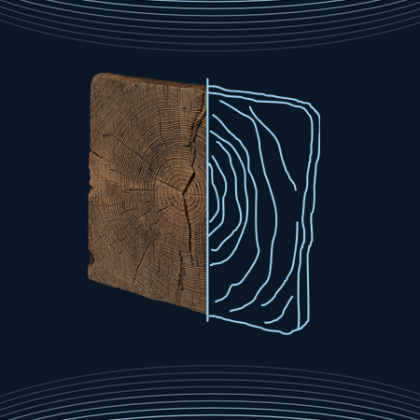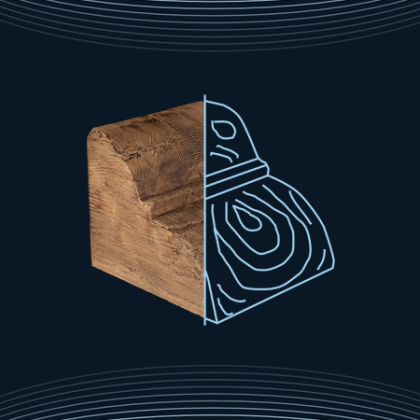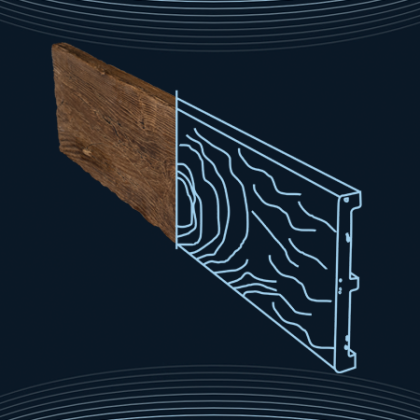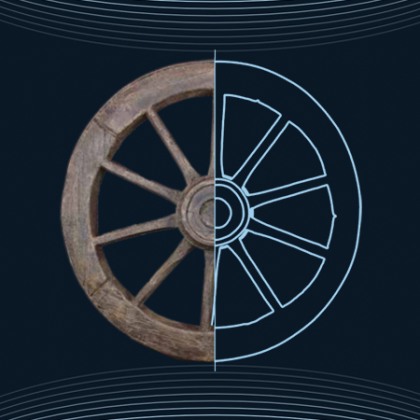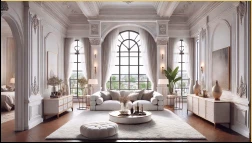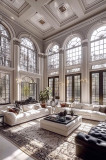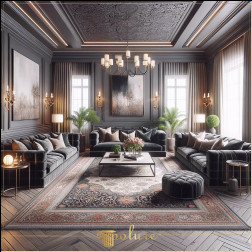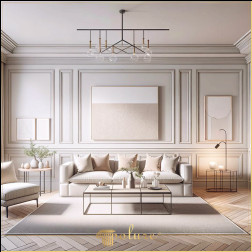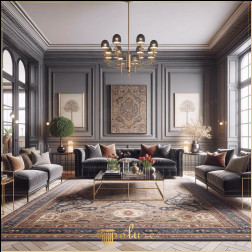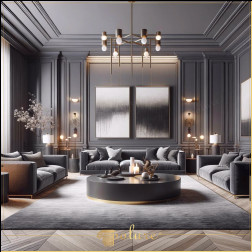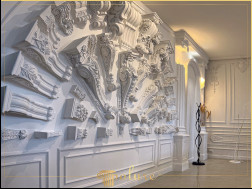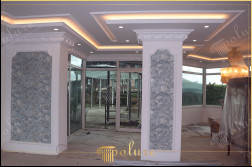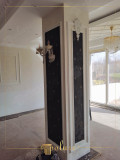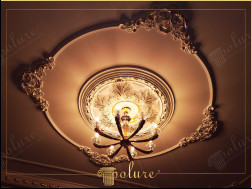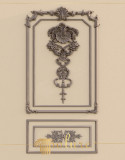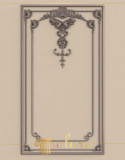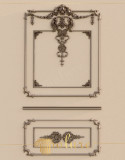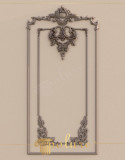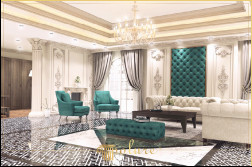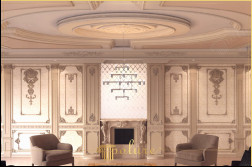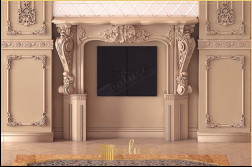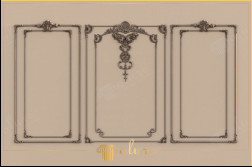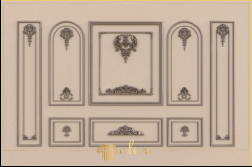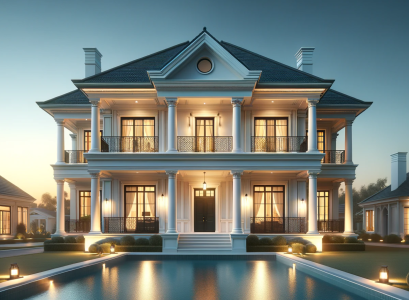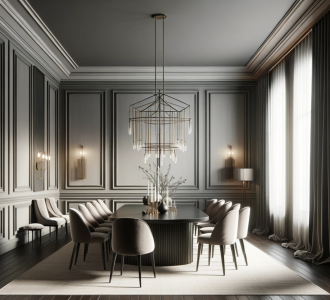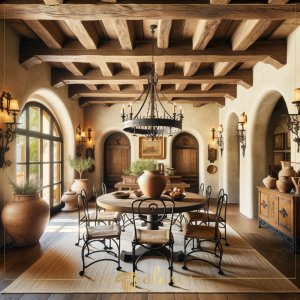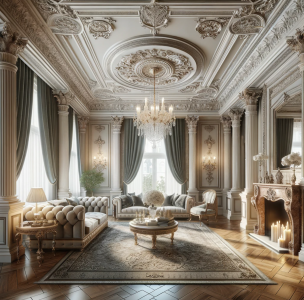659 - Living room decoration models with columns
Here is a luxury living room design This design features large arched windows elegant moldings and high ceilings The room feels large and spacious nat
The used products!658 - Living room decor column and arch models
Living room decor column and arch models
The used products!513 - Living Room Enriched with Detailed Wall and Ceiling Moldings with a Noble Touch
Wall and ceiling slats create an eye-catching effect for those looking for nobility and sophistication in the decoration of a living room. This living
The used products!512 - Modern Living Room Decoration Decorated with Elegant and Bright Wall and Ceiling Moldings
Combining elegance and simplicity, modern living room decoration is the art of creating a peaceful and inviting atmosphere. The living room in this pi
The used products!511 - Modern Interpretation of Classical Lines, Living Room Decoration Enriched with Wall and Ceiling Moldings
Every living room is a work of art that tells its story. Wall and ceiling moldings appear as the highlighting elements of this story. The living room
The used products!509 - Living Room Decoration Enriched with Wall and Ceiling Rails, the Symbol of Nobility
Wall and ceiling moldings are decorative elements that add depth and character to spaces. Historically accepted as an indicator of nobility and elegan
The used products!484 - Polyurethane decoration strut models
Polyurethane decoration strut models are decorative elements used indoors and outdoors with their aesthetic and durable designs. Polyurethane material
The used products!471 - Beauty is hidden in the details
Decorative plasterboard details add elegance and aesthetics to interior spaces. Standing out with their minimalist lines and various patterns, plaster
The used products!470 - Capture Art Aesthetics on the Living Room Wall Personalize Your Space
Slat and plasterboard details add a sophisticated atmosphere to spaces. Slatted designs offer a modern elegance with minimal lines, while plasterboard
The used products!469 - Living room ceiling decoration polyurethane ornament
Polyurethane decoration for living room ceiling decoration is the perfect way to create a modern and stylish atmosphere. Polyurethane material stands
The used products!466 - Classic Living Room decoration polyurethane ceiling core
Polyurethane Ceiling Core 15 meters diameter hall decoration work
The used products!428 - Artistic Touch in Interiors with Polure Original Designs with Aesthetic Wall Cheetahs
Polure offers an artistic touch to interiors with the projects shared on its website Polure, which allows you to create original designs with wall che
The used products!427 - Aesthetic Touch to Interiors with Polure Creative and Eye-catching Designs with Wall Sticks
With the projects shared on Polure's website, it offers original designs with creative and eye-catching wall cheetahs. Cheetahs made of polyuretha
The used products!426 - Add Originality to Interiors with Polure, Modern and Stylish Designs with Aesthetic Wall Laths
With the projects shared on Polure's website, it offers original and stylish designs with aesthetic wall cheetahs. Wall cheetahs made of polyureth
The used products!425 - Aesthetic Touch of Wall Cheetahs in Indoors with Polure Decorate Your Interiors with Creative Designs and Unique Details
We add difference and originality by decorating your spaces with our creative designs and unique details.
The used products!419 - Classic Interior Reflecting Timeless Elegance The Pearl of Elegance
In this project, timeless elegance is offered with the dazzling aesthetics of classical interior design. The elegance created in the details, carefull
The used products!417 - A Fascinating Place with a Classic Interior Design, Reflection of Timeless Aesthetics
In this project, a timeless atmosphere is created with the fascinating aesthetics of the classical interior design. Attention to details brings a soph
The used products!416 - An Aesthetic Touch to Your Spaces with Warm and Stylish Decorative Fireplaces with Polure
Description Polure brings a warm and stylish atmosphere to your spaces with decorative fireplaces with the projects it shares on its website Polure, w
The used products!415 - The Magical Touch of Wall Cheetahs in Indoors with Polure, Meeting of Aesthetics and Elegance
Creates a magical touch in interiors with wall cheetah projects shared on Polure website. Our cheetahs, where aesthetics and elegance meet, allow you
The used products!414 - The Magical Touch of Wall Cheetahs in Indoors with Polure, Meeting of Aesthetics and Elegance
Creating a magical touch in interiors with wall cheetah projects shared on Polure website Our cheetahs, where aesthetics and elegance meet, allow you
The used products!Classic Interior decoration - Polyurethane Classic Interior Decoration Models Designs and Ideas
Transform Your Space with Polyurethane Classic Interior Decorations Embrace the enduring charm of classic interior decoration with the modern touch of polyurethane. Known for its versatility and durability, polyurethane is the ideal choice for achieving a look of timeless elegance in both homes and commercial spaces. Explore the wide range of polyurethane models for classic interior decoration that can elevate any room into a luxurious sanctuary. Why Polyurethane? Opting for polyurethane brings numerous advantages. Its lightweight nature simplifies installation, while its resistance to moisture, mold, and mildew ensures long-lasting beauty. Polyurethane can effortlessly imitate the appearance of more costly materials like wood, stone, and plaster, making it a popular choice for classic designs. Popular Polyurethane Decoration Models Crown Moldings: Frame ceilings and walls with intricate crown moldings to add elegance and character. Corbels and Brackets: Enhance the visual appeal of shelves and architectural details with sophisticated corbels and brackets. Columns and Pilasters: Incorporate polyurethane columns and pilasters for a touch of grandeur and architectural interest. Panel Mouldings: Use panel mouldings to create wainscoting or frame wall panels for a refined look. Ceiling Medallions: Highlight chandeliers and light fixtures with ceiling medallions for a luxurious atmosphere. Customization and Finishing Polyurethane decorations can be easily customized and finished to match any interior color scheme, allowing for seamless integration with existing decor. Whether painted, stained, or faux finished, polyurethane offers the flexibility to create personalized and sophisticated classic designs. Polyurethane classic interior decoration models offer an affordable, durable, and versatile solution for infusing timeless elegance into any space. Embrace the sophistication of classic decor with the modern benefits of polyurethane today.
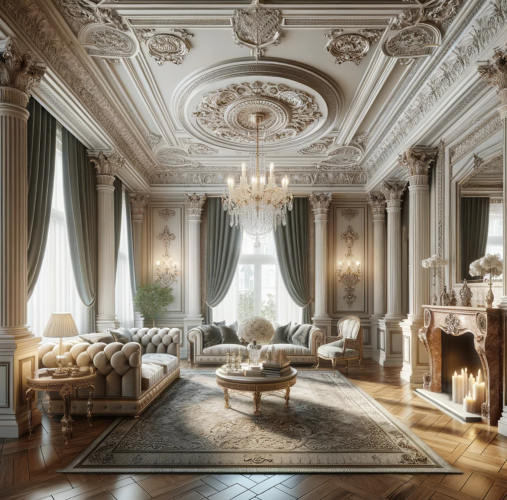
Polyurethane Classic Interior Decoration refers to using polyurethane-based materials to create traditional and elegant designs inside homes or buildings. These materials can include decorative moldings, trim, and other architectural details that add a timeless look to interiors.
Polyurethane classic interior decoration refers to the use of polyurethane materials in creating timeless and elegant interior designs. Polyurethane, a versatile plastic material, has been increasingly used in the field of interior decoration due to its durability, ease of maintenance, and aesthetic flexibility. This material can be molded into various shapes and designs, making it ideal for creating intricate decorative elements that add a touch of sophistication to any interior space. One of the key features of polyurethane in classic interior decoration is its ability to replicate the look and feel of traditional materials such as wood, stone, and metal. This makes it a cost-effective alternative for achieving a luxurious ambiance without the high expense and maintenance requirements of natural materials. Polyurethane decorative elements, including moldings, trims, cornices, and ceiling medallions, are lightweight, easy to install, and can be painted or stained to match any interior color scheme. Moreover, polyurethane is resistant to moisture, mold, and mildew, making it an excellent choice for use in various environments, including humid or coastal areas. Its insulation properties also contribute to energy efficiency, making polyurethane decorative elements not only beautiful but also functional. In conclusion, polyurethane classic interior decoration offers a blend of aesthetic appeal, functionality, and cost-effectiveness. It allows designers and homeowners to create elegant, durable, and timeless interiors that can withstand the test of time. Whether you are renovating a historic home or aiming to add a classic touch to a modern space, polyurethane decorative elements can achieve the desired effect with grace and style.Polyurethane Classic Interior Decoration
Classic interior decoration has a significant role in history, serving as a timeless style that emphasizes elegance, symmetry, and harmony. It draws inspiration from the ancient Greek and Roman designs, showcasing detailed craftsmanship and luxurious materials. This style has remained popular through centuries, influencing various aspects of architecture and design around the world.
Classic interior decoration, with its enduring aesthetic appeal and historical significance, occupies a distinguished place in the annals of design history. This style, characterized by its emphasis on symmetry, proportion, and a harmonious blend of functionality and aesthetics, traces its origins back to the ancient civilizations of Greece and Rome. Over centuries, it has evolved, influencing and being influenced by various cultural and historical epochs. The genesis of classic interior decoration can be traced back to the architectural and decorative principles of ancient Greece, which emphasized harmony, balance, and order. These principles were further refined and elaborated upon by the Romans, who introduced a sense of grandeur and luxury in the use of space and materials. The Renaissance period witnessed a revival of classical ideals, with artists and architects like Leonardo da Vinci and Michelangelo drawing inspiration from ancient models to create spaces that combined beauty, function, and human proportion. During the 17th and 18th centuries, the Baroque and Rococo styles, respectively, offered a more ornate and elaborate take on classicism, incorporating intricate decorations, bold colors, and dynamic compositions. However, the Neoclassical movement of the late 18th and early 19th centuries marked a return to the purity and simplicity of ancient Greek and Roman designs, emphasizing architectural elements such as columns, pediments, and friezes. In the modern era, classic interior decoration continues to be revered for its timeless beauty and elegance. It serves as a source of inspiration for contemporary designers who seek to blend traditional elements with modern aesthetics to create spaces that are both functional and beautiful. Whether in public buildings, luxury homes, or stylish commercial spaces, the principles of classic design remain a testament to the enduring human desire for harmony and beauty in their environments. In conclusion, the place of classic interior decoration in history is not merely as a style or trend but as a foundational element that has shaped the evolution of architectural and decorative arts. Its principles of balance, proportion, and beauty continue to influence design decisions and preferences, making it an integral part of the cultural heritage and artistic expression of societies around the world.The Place of Classic Interior Decoration in History
Polyurethane classic interior decoration features include durability, flexibility in design, resistance to wear and tear, and ease of maintenance. These materials can replicate the look of traditional wood or stone while providing cost-effective, lightweight alternatives for decorative elements such as moldings, trims, and architectural details.
Polyurethane has become a popular choice in classic interior decoration due to its versatility and durability. This synthetic material can be molded into various shapes and designs, making it an ideal choice for creating intricate moldings, ornate frames, and elegant furniture pieces that add a touch of sophistication to any room. One of the most significant advantages of polyurethane is its durability. Unlike traditional materials like wood or plaster, polyurethane is resistant to moisture, mold, and mildew, making it an excellent choice for areas prone to these issues. Its resilience also means it can withstand the wear and tear of daily life, maintaining its beauty for years to come. Polyurethane's flexibility allows for the creation of designs that would be difficult or impossible to achieve with other materials. It can be molded into intricate patterns and shapes, offering endless possibilities for customization and uniqueness in interior decoration. Despite its high-quality appearance and durability, polyurethane is a cost-effective option for interior decoration. It offers the look and feel of more expensive materials like wood or stone at a fraction of the cost, making it accessible for a wide range of budgets. Maintenance of polyurethane decorations is straightforward. They can be easily cleaned with a damp cloth, and their resistance to moisture and wear ensures they remain in excellent condition with minimal effort. As the demand for sustainable materials grows, manufacturers are producing eco-friendly polyurethane options. These variants are made from renewable resources and are designed to have a lower environmental impact, making them a responsible choice for eco-conscious consumers. In conclusion, polyurethane offers a blend of durability, flexibility, cost-effectiveness, easy maintenance, and eco-friendly options, making it an excellent choice for classic interior decoration. Its ability to mimic more expensive materials and adapt to various designs allows for creative and sophisticated interior spaces that stand the test of time.Polyurethane Classic Interior Decoration Properties
Durability
Flexibility
Cost-Effectiveness
Easy Maintenance
Eco-Friendly Options
Yes, the applications of polyurethane in classic interior decoration are distinct.
Polyurethane has become a pivotal material in the realm of classic interior decoration, offering a wide range of applications due to its versatility, durability, and aesthetic appeal. Its usage areas in classic interior decoration are diverse, catering to both functional and decorative needs. One of the primary functional uses of polyurethane in classic interiors is in architectural moldings. Polyurethane moldings are widely used for creating intricate cornices, ceiling medallions, and door and window frames. These elements add a touch of elegance and sophistication to any room, emulating the classic styles of historical periods. Unlike traditional materials such as wood or plaster, polyurethane is resistant to moisture, mold, and mildew, making it a durable choice for interior decoration. Beyond its functional uses, polyurethane also shines in decorative applications within classic interior decoration. It is utilized in manufacturing decorative elements such as wall panels, ornamental motifs, and even furniture detailing. These components can be intricately designed to mimic the look and feel of wood, stone, or metal, allowing for a luxurious aesthetic without the associated cost or maintenance requirements. The customization possibilities with polyurethane are nearly limitless, enabling designers and homeowners to achieve a personalized look that reflects their taste and the home's architectural style. Whether it's a Victorian-inspired living room or a Baroque-style bedroom, polyurethane decorative elements can be tailored to fit any classic interior theme. While polyurethane offers many benefits in classic interior decoration, it is also important to consider its environmental impact. Advances in polyurethane production have led to more eco-friendly formulations, reducing the carbon footprint associated with its use in interior decoration. Choosing recycled or green polyurethane options can further enhance the sustainability of a classic interior design project. In conclusion, the usage areas of polyurethane in classic interior decoration are indeed separated into functional and decorative categories, each serving distinct purposes. Its adaptability, durability, and aesthetic versatility make it an invaluable material in creating timeless interior spaces that pay homage to the past while embracing modern innovations.Polyurethane in Classic Interior Decoration
Functional Applications
Decorative Applications
Customization and Versatility
Environmental Considerations
Polyurethane Classic Interior Decoration Designs
Classic interior decoration never goes out of style, and polyurethane has become a popular material in achieving timeless elegance within homes and commercial spaces. Polyurethane, with its versatility and durability, offers a wide range of models for classic interior decoration that can transform any space into a luxurious haven. Polyurethane is favored for its lightweight nature, ease of installation, and resistance to moisture, mold, and mildew, making it an ideal choice for interior decorations. Its ability to mimic the look of more expensive materials such as wood, stone, and plaster contributes to its popularity in classic designs. Several polyurethane models stand out when it comes to classic interior decoration: One of the advantages of using polyurethane in classic interior decoration is the ability to customize pieces to fit specific designs and spaces. Moreover, polyurethane decorations can be painted, stained, or faux finished to match any interior color scheme, allowing for a seamless integration with existing decor. Polyurethane classic interior decoration models offer an affordable, durable, and versatile solution for creating timeless designs. Whether renovating an old space or decorating a new one, polyurethane decorations can provide the elegance and sophistication of classic decor with modern benefits.Polyurethane Classic Interior Decoration Models
Why Choose Polyurethane?
Popular Polyurethane Decoration Models
Customization and Finishing
Conclusion
Can polyurethane classic interior decoration be used outside?
When it comes to decorating our homes, both the interior and exterior spaces deserve equal attention. One of the common questions homeowners and decorators ask is whether polyurethane classic interior decorations can be used on exterior walls. This question arises due to the unique properties of polyurethane and the different environmental conditions exterior walls face compared to interior spaces. Polyurethane is a versatile polymer that can be adapted for a wide range of applications, including furniture, insulation, and decorations. It is favored for its durability, resistance to wear, and aesthetic flexibility. In interior decoration, polyurethane is often used to create ornate moldings, trims, and other architectural details that add a classic touch to modern homes. While polyurethane is durable, using it on exterior walls poses several challenges. The primary concern is its resistance to environmental factors such as UV light, temperature fluctuations, and moisture. Prolonged exposure to sunlight can cause polyurethane to discolor and degrade, losing its aesthetic appeal and structural integrity. Similarly, extreme temperatures and moisture can warp or damage the material, compromising its durability. To overcome these challenges, it is crucial to use polyurethane products specifically designed for exterior use. These products are treated with UV stabilizers and other protective coatings to enhance their resistance to environmental conditions. However, they might still require regular maintenance and reapplication of protective coatings to ensure their longevity. Alternatively, homeowners and decorators can explore other materials for exterior decorations that mimic the classic look of polyurethane. Materials such as exterior-grade PVC, fiberglass, and treated wood offer similar aesthetic appeal and are better suited to withstand the rigors of outdoor conditions. In conclusion, while polyurethane classic interior decorations can technically be used on exterior walls, it is not recommended without proper treatment and considerations. For those looking to achieve a classic aesthetic for their home's exterior, exploring materials specifically designed for outdoor use is a more viable and durable solution.Can Polyurethane Classic Interior Decoration Be Used on Exterior Walls?
Understanding Polyurethane Material
Challenges for Exterior Use
Solutions and Alternatives
Conclusion
Can polyurethane classic interior decorations be painted?
When it comes to updating the look of your home, painting can be a quick and effective way to refresh your space. One question that often arises is whether polyurethane classic interior decorations can be painted. The answer is yes, but there are some important steps to follow to ensure a successful outcome. Before painting, it's crucial to properly prepare the surface. Polyurethane surfaces should be cleaned to remove any dust, grease, or other contaminants. Lightly sanding the surface with fine-grit sandpaper can help create a texture that the paint can adhere to. After sanding, be sure to remove all dust with a tack cloth or damp rag. Not all paints are suitable for polyurethane surfaces. Water-based acrylic paints are often recommended because they adhere well and dry quickly. However, for the best results, consider using a paint specifically designed for polyurethane or plastic surfaces. These paints contain special bonding agents that improve adhesion and durability. Applying a primer is an essential step when painting polyurethane. Primer provides a uniform surface for the paint to adhere to and can significantly improve the longevity of the paint job. Use a primer designed for use on polyurethane or plastic surfaces. Allow the primer to dry completely before moving on to painting. For the best results, apply the paint in thin, even coats. Using a brush, roller, or spray can achieve a smooth finish, but each method requires a different technique. When using a brush, select one with synthetic bristles that won't leave brush marks. Rollers should be of high quality to avoid lint in the finish. Spray painting can provide a very smooth finish but requires a well-ventilated area and protective gear. With the right preparation and materials, painting polyurethane classic interior decorations is a viable way to refresh your home's look. By following the steps outlined above, you can achieve a professional-looking finish that revitalizes your space.Painting Polyurethane Classic Interior Decoration
Preparing the Surface
Choosing the Right Paint
Applying Primer
Painting Techniques
Conclusion
Applying polyurethane for classic interior decoration involves several straightforward steps. Firstly, prepare the surface by cleaning and sanding it. Next, apply a thin coat of polyurethane using a brush or sprayer, making sure to work in a well-ventilated area. Allow it to dry completely, then lightly sand the surface again. Repeat the application of thin coats, sanding between each, until you achieve the desired finish. Finally, let the final coat dry thoroughly.
Applying polyurethane is a crucial step in preserving the beauty and durability of wood surfaces, especially in classic interior decorations. This guide will walk you through the process to ensure a flawless finish. Applying polyurethane to wood surfaces not only enhances the beauty of classic interior decorations but also protects the wood from wear and tear. With the right preparation and application techniques, you can achieve a professional and durable finish that will last for years to come.How to Apply Polyurethane for Classic Interior Decoration
Materials Needed
Preparation
Application
Conclusion
Polyurethane classic interior decoration is more durable and has a higher quality finish compared to styrofoam classic interior decoration, which is lighter and less expensive but not as long-lasting or sturdy.
When it comes to classic interior decoration, both polyurethane and styrofoam materials are popular choices for creating elegant and timeless designs. However, they come with their own set of characteristics that differentiate them from one another. Understanding these differences can help homeowners and interior designers make informed decisions when selecting materials for their projects. Polyurethane is renowned for its durability and strength. It is resistant to wear and tear, making it ideal for high-traffic areas in homes or commercial spaces. Polyurethane decorations can withstand impacts and are less likely to chip, crack, or break compared to styrofoam. On the other hand, Styrofoam, while lightweight and easy to install, is less durable than polyurethane. It is prone to chipping and breaking if handled roughly, and may not fare well in areas where durability is a necessity. Polyurethane decorations are often more detailed and can be crafted to mimic the look of wood, stone, or other materials with a high degree of accuracy. The material allows for a smoother finish, which can be painted or stained to match any interior design scheme. Styrofoam decorations, while also capable of being painted, generally have a less refined finish and the details might not be as sharp or intricate as those made from polyurethane. However, for certain applications where the weight is a concern, styrofoam can be a suitable choice. The production and disposal of polyurethane can have a higher environmental impact due to its chemical composition and the processes involved in its manufacturing. It is less likely to degrade over time, contributing to landfill waste. Styrofoam, while also a product of chemical processes, is often criticized for its environmental footprint, particularly concerning waste management and its difficulty to recycle. However, advancements in recycling technologies are beginning to address these concerns. From a cost perspective, styrofoam is typically less expensive than polyurethane. This makes it an attractive option for budget-conscious projects. However, the long-term durability and aesthetic benefits of polyurethane might offset its higher initial cost for some projects. Choosing between polyurethane and styrofoam for classic interior decoration depends on several factors including budget, desired aesthetic, durability requirements, and environmental considerations. Polyurethane offers strength, durability, and a more refined finish, while styrofoam provides a lightweight, cost-effective alternative with ease of installation. Carefully weighing these aspects will guide you in selecting the best material for your interior decoration project.Difference Between Polyurethane and Styrofoam Classic Interior Decoration
Durability and Strength
Appearance and Finish
Environmental Impact
Cost Considerations
Conclusion
The difference lies in the material composition. Polyurethane is a type of plastic, while plaster is a mixture of water, sand, and cement. Polyurethane is lighter and more flexible, while plaster is heavier and more traditional for interior decoration.
Classic interior decoration often involves the use of intricate moldings and decorative elements to add elegance and character to a space. Two materials commonly used for these decorative features are polyurethane and plaster. While both can be used to achieve a classic aesthetic, they have distinct differences that make them suitable for different applications. Polyurethane is a type of plastic that is widely used in the production of moldings and decorative elements for interior decoration. It is lightweight, durable, and resistant to moisture and mold, making it an excellent choice for both residential and commercial spaces. Polyurethane elements can be easily painted, and they come in a wide range of designs, from simple to intricate. They are also easy to install, often requiring only adhesive and minimal tools. Plaster, on the other hand, is a traditional material that has been used for centuries in classic interior decoration. It is made from a mixture of water, gypsum, or lime, and it is known for its ability to be molded into highly detailed and complex designs. Plaster offers a sense of depth and texture that is hard to replicate with other materials. It is ideal for creating custom decorative elements but requires skilled artisans for installation. Plaster is also more susceptible to damage from moisture and impact compared to polyurethane. When deciding between polyurethane and plaster for classic interior decoration, consider the specific needs of your project. Polyurethane offers ease of installation, durability, and resistance to moisture, making it suitable for a wide range of environments. Plaster, while more labor-intensive and delicate, provides unparalleled depth, texture, and the opportunity for custom artistry. Your choice should be based on the desired aesthetic, the environment where the material will be used, and the availability of skilled craftsmen for installation.Difference Between Polyurethane and Plaster in Classic Interior Decoration
Introduction
Polyurethane in Classic Interior Decoration
Plaster in Classic Interior Decoration
Comparison and Conclusion
Polyurethane precast is made from a type of plastic that's strong and lightweight. GRC precast, or Glass Reinforced Concrete precast, combines concrete with glass fibers for added strength and durability.
In the construction industry, the materials used are as important as the design of the structure itself. Among the various materials used, Polyurethane Precast and Glass Reinforced Concrete (GRC) Precast stand out for their unique properties and applications. Understanding the differences between these two materials is crucial for architects, builders, and engineers to make informed decisions. Polyurethane Precast is a type of building material that is made by casting polyurethane into molds to form various architectural shapes and designs. Polyurethane is a type of polymer that is known for its flexibility, durability, and resistance to environmental factors. This material is often used for decorative elements, insulation panels, and in situations where lightweight components are preferred. GRC Precast, or Glass Reinforced Concrete Precast, is a composite material made from cement, fine aggregates, water, chemical admixtures, and glass fibers. It is known for its high strength-to-weight ratio, making it an ideal choice for a wide range of architectural and structural applications. GRC Precast is used for façade panels, architectural cladding, and ornamental shapes. Choosing between Polyurethane Precast and GRC Precast depends on the specific requirements of the project, including weight, strength, aesthetic considerations, and environmental resistance. By understanding the key differences between these two materials, construction professionals can select the most appropriate material for their projects, ensuring durability, functionality, and beauty.Difference Between Polyurethane Precast and GRC Precast
Introduction
What is Polyurethane Precast?
What is GRC Precast?
Main Differences
Conclusion
Prices for classic interior decoration with polyurethane.
In the realm of interior decoration, polyurethane has become a favored material for those seeking to infuse their spaces with classic elegance. Known for its durability, versatility, and ease of maintenance, polyurethane is often used in moldings, trims, and decorative panels, contributing to a sophisticated and timeless ambiance.
The cost of polyurethane classic interior decoration items can vary widely depending on several factors, including the complexity of the designs, the quality of the material, and the size of the items. On average, simple polyurethane decorative moldings may start from as low as $5 per linear foot, while more intricate designs can go up to $25 per linear foot or more. Ceiling medallions, another popular polyurethane decoration item, can range from $20 for basic designs to over $200 for larger and more elaborate options.
When considering the installation of polyurethane decorations, it's essential to factor in the cost of professional installation, which can vary depending on your location and the complexity of the project. DIY enthusiasts might save on these costs, but it's crucial to have the right tools and a good understanding of the installation process to ensure a polished finish.
In conclusion, while the initial investment in polyurethane classic interior decorations may seem substantial, the durability and timeless appeal of these elements make them a cost-effective choice in the long run. By carefully selecting designs that complement your space and budget, you can achieve a luxurious and enduring aesthetic.
Polyurethane Classic Interior Decoration Prices
 English
English
 Romanian
Romanian
